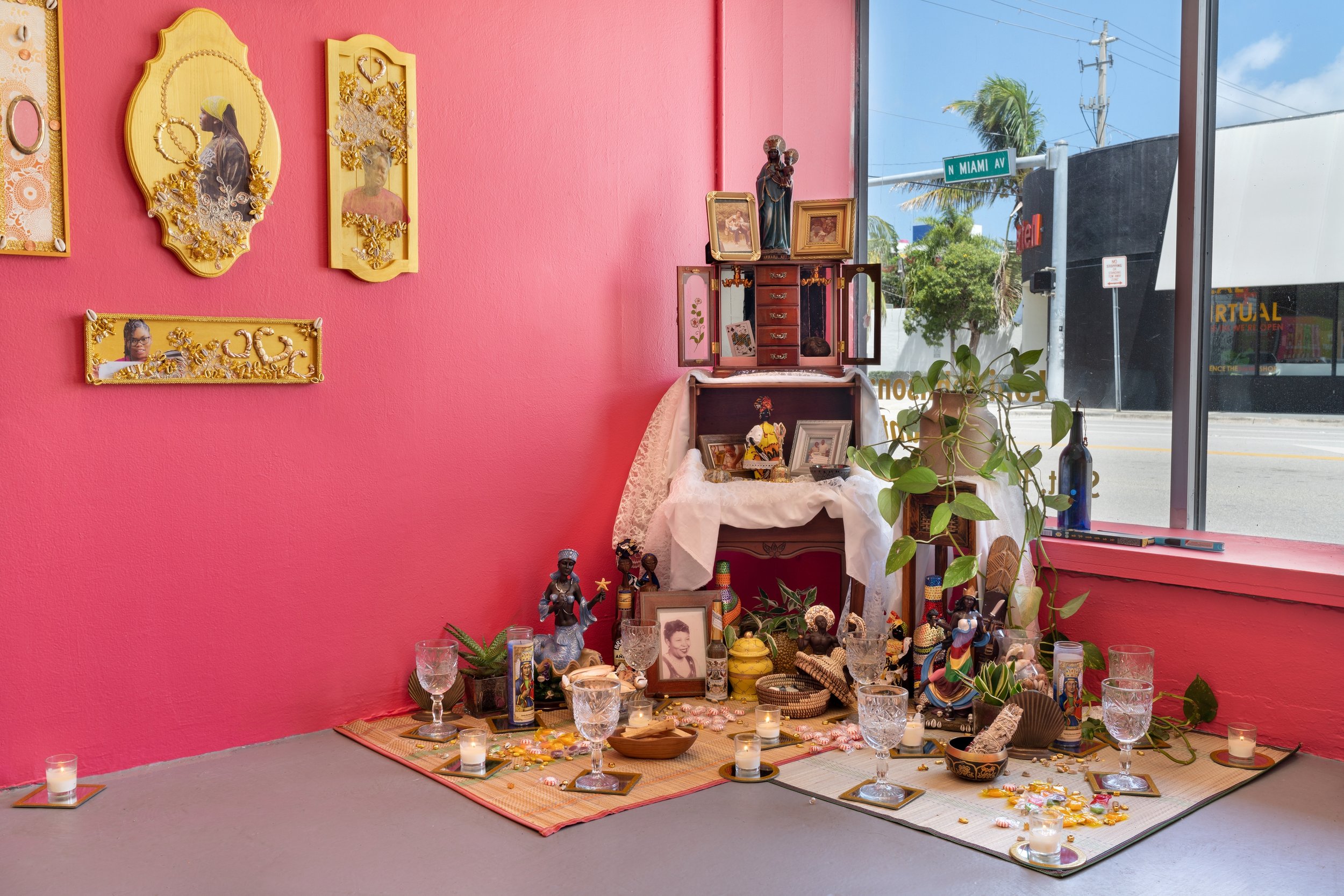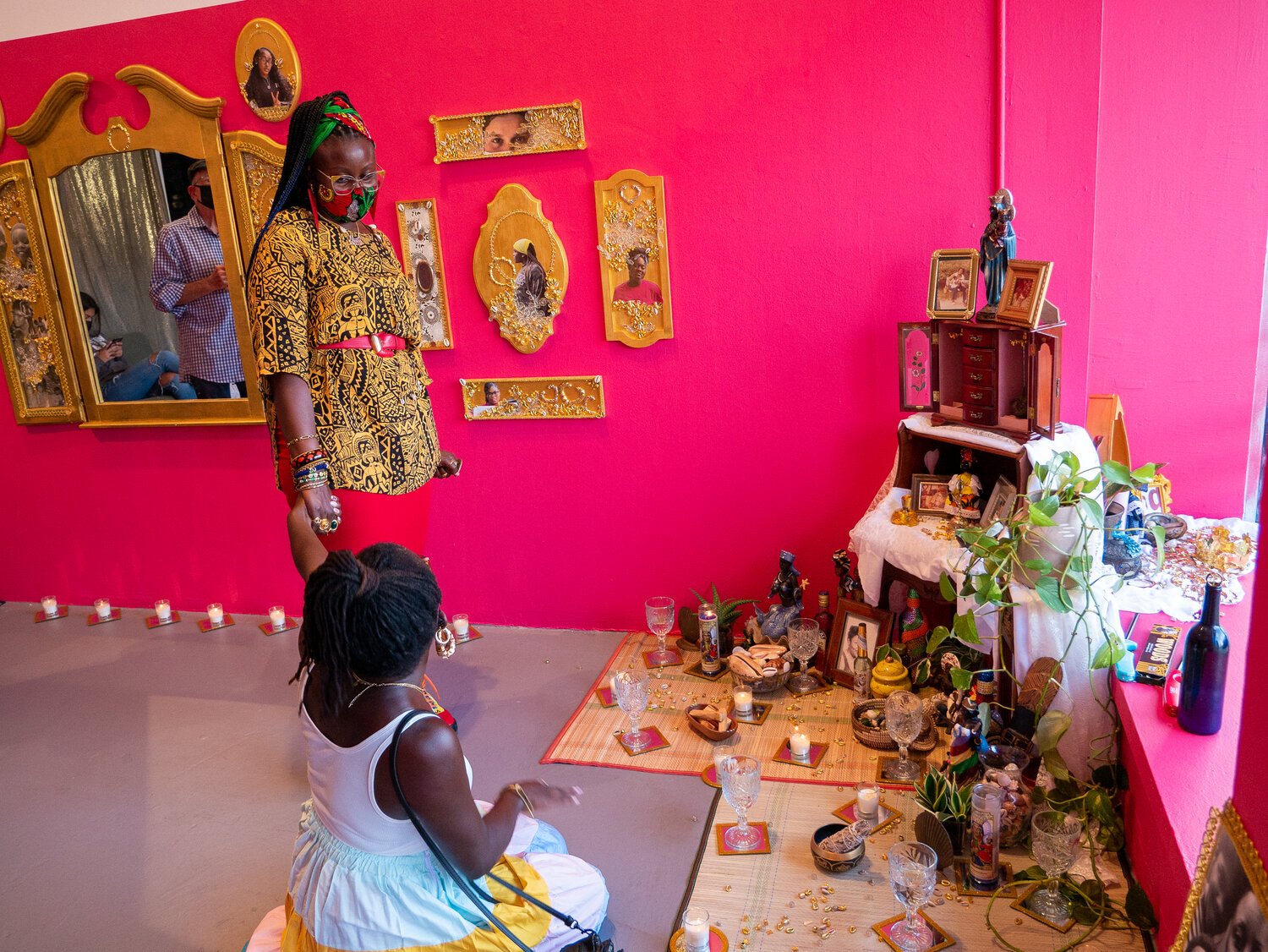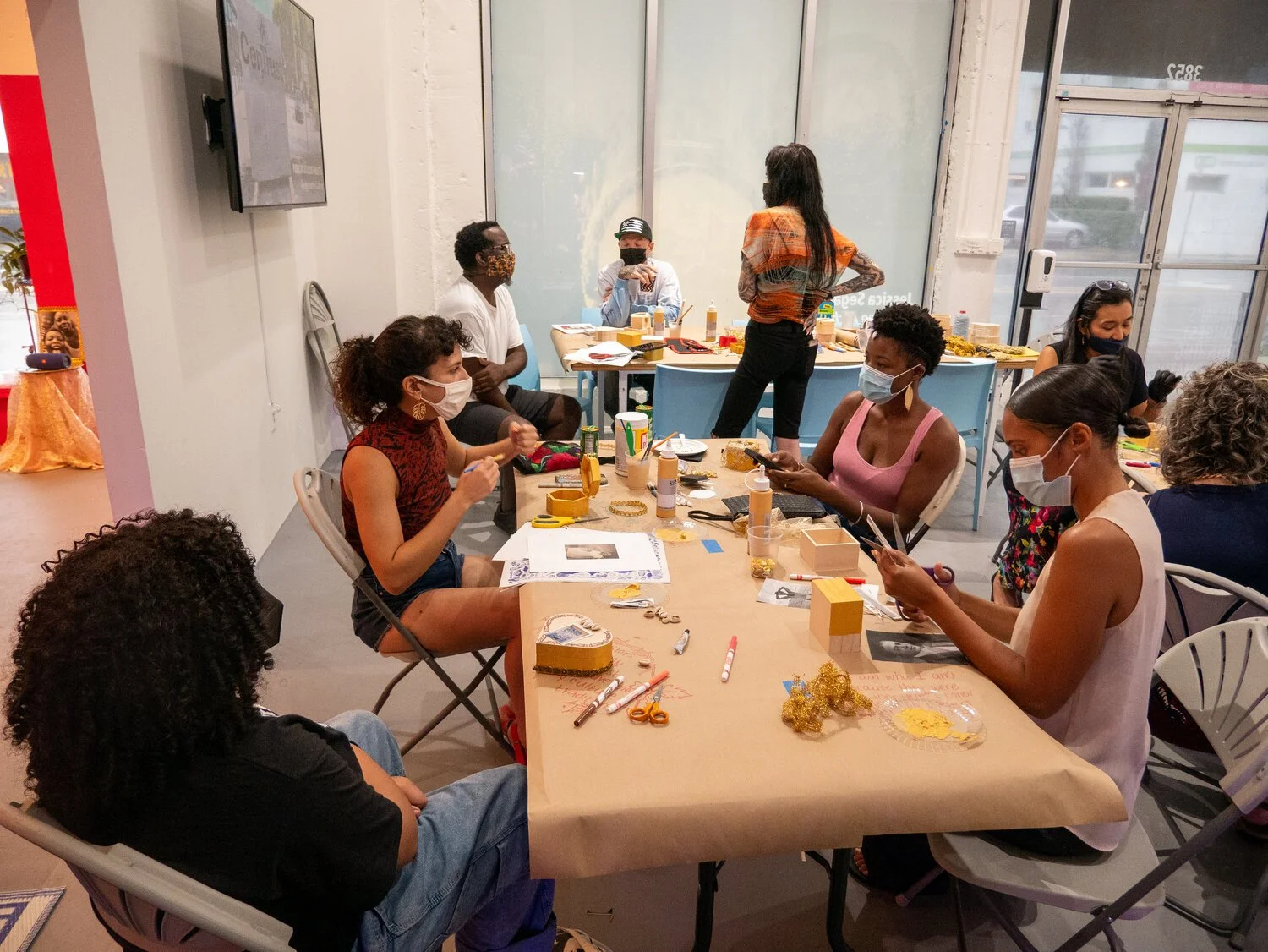Ritual, Performance, & Care in the Altar-Making Practices of Loni Johnson | By Anita Sharma
“Black women’s geographies and poetics challenge us to stay human by invoking how black spaces and places are integral to our planetary and local geographic stories”
Miami-based artist Loni Johnson's site-specific installation Remnants at Locust Projects is the culmination of a decades-long exploration of relational inquiries that imagine and visualize alternative geographies for communities of color. Johnson’s multidisciplinary social and studio art practices converge to underscore the need to develop holistic, plural and socially responsive art-making processes. Johnson marries an arts-based approach with her experience as an arts educator, activist and community advocate to explore how art can propose new models for the social empowerment of Black women and girls. These concerns span throughout Johnson’s practice as seen in her archives mapping visual speculations that envision how ‘Blackness’ inhabits space and moves throughout time. From her performance-based work to her altar making practices, we see a syncretic visual language dedicated to making visible the presence of those who are erased from history. Remnants pays homage to the lives of Black women intergenerationally and commemorates their legacies through multilayered visual altars, that interlace storytelling and archival narration. This project also invokes participatory practices that are aimed at increasing awareness of how collective action can invoke social change.
Johnson transforms the interior of Locust Projects’ street-facing Mobile Studio space into an intimate refuge that invites contemplation and reflection. She presents us with a restorative premise with this public project: how can we navigate through public spaces in ways that activate our memories? How does this excavation of our history present us with possibilities for the future? And what is the affective potential of that embodiment? Johnson’s practice echoes the groundbreaking traditions of pioneering artists Betye Saar and Amalia Mesa Bains whose altar-making practices, “... are essentially about and in the service of relationships that include... past, present, and future, the conscious world and the world of the unconscious, as well as formal relationships between objects''. [2] In Johnson’s vision, altars disrupt the traditional spatial hierarchies and power structures inherently found in public spaces through a set of ritual beliefs and practices.
Upon entering the space, one is immediately captured by the bright hues of pink walls. Pink, a color Johnson warmly associates with her grandmother’s home, evokes strong sense memories and cues the entrance into a liminal space, one that defies the linear markers of time. Situating an altar within walls referencing the artist’s maternal lineage also creates a temporal dynamism that renders memory as ‘safe spatial geography’. The anointment in pink, represents an act of consecration which activates the remnants of past/present and symbolically connects them to a future with ‘radical possibilities’.
Altars can vary in size, shape, intent and orientation. They can exist in homes and in more traditional houses of worship. Johnson’s altar-making reflects patterns found in both realms with unique distinctions. The design and layout of the altar foreground the aesthetics of a vocabulary that shifts between the personal and communal, the earthly and celestial, the sacred and the everyday. Each form, object and icon possesses a unique ritual significance. The way these elements are configured also has symbolic meaning. Together, these remnants compose a universe of personal, sacred geographies. Johnson also draws deeply from her extensive knowledge of West African Yoruba traditions, American Hoodoo beliefs and Afro-Cuban religions in her altar-making practices and displays a combination of personal images alongside religious figurines such as oshun (river goddess) and oya (wind god) from the Yoruba pantheon. While Johnson synthesizes the influence of African Diasporic spiritual, religious and folk traditions in her work, she is also acknowledging respectfully, the historicity and specificity of these belief systems as they relate to the Black American experience.
The central altarpiece consists of an assemblage of ceremonial objects, trinkets, figurines, and relics belonging to the artist's vast repository of ritual objects. Assortments of candles from local Miami botanicas, flowers, incense holders, cowrie shells, talismans and plants, and other items that have personal significance, are placed as offerings to her ancestors and deities.
Remnants also reclaims a vital space for restorative and celebratory representations of Black women in contemporary art. Collaged portraits of close family members, friends and students outline the walls in honorific constellations. Many of these arrangements are formatted autobiographically. On the north-facing wall, Johnson arranges photos of the maternal and paternal sides of her family in narrative formats, to reflect her lineage. She fondly recalls these stories with visitors. Black and white and color photographs are presented in gilded, illuminated frames in elaborate configurations resembling icons that evoke images of the feminine divine and the “Black Madonna”.
Johnson pays tribute to the students she mentors through Girl Power, a local non-profit. Their portraits reflect her expanding family. Decorative materials such as sequins, lace and earrings, mirrors and items found in local beauty supply stores embellish the portraits in intricate geographies forming ancestral maps. These iconic mappings link women from her past and present in a “... symbolic mode of connection and affiliation by bringing together images which represent different realms of experience and meaning, — heaven and earth, family and community, nature and culture”.[3] Johnson elevates the symbolic potential of the altar with a radical new archetype of interconnected feminism. By creating a compelling visual language and iconography, she re-envisions new narratives that memorialize the legacies of Black women.
Another important element of Johnson’s practice relates to the relationship of performance and caregiving rituals. As Kay Turner suggests, while the altar is seen as an art object, it is also important to see it as a space of performance.[4] Johnson’s performances take many forms. Throughout her repertoire of performances across Miami, the altar is always present, and each one begins with an invocation of her ancestors. This ritual consecration is an act of communication, confronting the ‘social memory’ of each site.
In Remnants, the elements of performativity manifest in different ways. While the medium varies, the intent is the same. Every image, object and item assembled possesses agency and communicates from a “...threshold, as a point of departure”.[5] The altar-maker is instrumental in activating the site through storytelling, caregiving, and welcoming communication and exchange with viewers who are equal participants in the space. In workshops, participants reflect on their own ancestry and create offerings that are generously absorbed into the installation, signalling their communal value. Viewers are invited to kneel in front of the altars and gaze up at the mirrors for a moment of self-reflection. For a brief second, the viewer's reflection becomes a part of the altar, suggesting that we all bear the weight of history and the potential to alter it. The praxis of caregiving extends to mentoring local youth and advocating for Black women and girls through community organizing. Ultimately, Remnants is a radical gesture of placemaking that shows us how art can engage with enduring social and historical concerns and create spaces for belonging and inclusion.
[1] McKittrick,Catherine, Demonic Grounds: Black Women and the Cartographies of Struggle, University of Minnesota Press, 2006, p.146
[2] Leah, Bradley, Amalia Mesa-Bains and Betye Saar: Altar Makers for the Sake of Life , Colorado State University, 1989, p.12.
[3] Kay, Turner, Altars: Tradition & Innovation in a Women’s Art, Exhibition catalog for Between the Worlds: The Art of Women’s Altars, Orange County Center for Contemporary Art, 1985. p.4.
[4] Ibid, p.7
[5] Ibid, p.7




